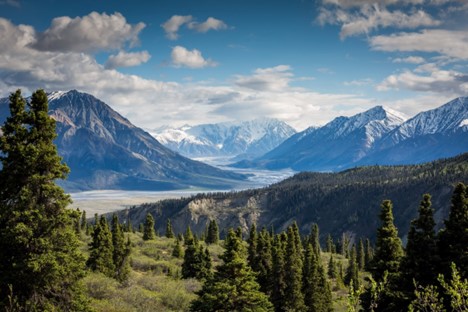
Did you know that water covers almost 71% of the earth’s surface? The remaining 29% represents the area covered by land. Furthermore, over 96% of the water on earth is saline water in the oceans.
Landforms can form over thousands of years. Weathering and the motion of tectonic plates contribute significantly to the formation and shape of different types of landforms.
Today, you’ll find many types of landforms on the earth’s surface. This article discusses the different types of landforms in existence.
Mountain Landform
These are physical features on the earth’s surface, higher than the surrounding areas. Mountain landforms exist today due to various processes.
Such processes include tectonic movements, volcanic eruptions, and earthquakes. These landforms can also occur after erosion activities on surrounding areas caused by water, glaciers, and wind.
Mountains can form in the oceans and other types of land.
Valleys
A valley is a low-lying area of land between mountains and hills. Valleys result from the erosive actions of glaciers and rivers over thousands or even millions of years.
Valleys can take form in two shapes: V-shaped and U-shaped valleys. The V-shaped valleys occur as a result of flowing rivers. On the other hand, U-shaped valleys exist due to glacier activities.
The Plains
Low and high plains cover the majority of the earth’s land area. Usually, you’ll find these landforms in regions with extensive sediment accumulation.
Examples of low-lying flat areas include floodplains and deltas of large rivers. High plains exist due to sediment accumulation in the seaways washed out of the Rocky Mountains.
A good example of high plains would be the Great Plains of central North America.
Islands
These types of landform get surrounded by water from all sides. Islands often form as a result of volcanic eruptions.
These landforms can also occur following hot spots in the lithosphere.
Islands also make highly sought-after real estate. As a landlord, you can choose to sell your island or build a holiday home out of it. You can click to sell your land and get the best value out of your property.
Dunes
These are small hills made up of sand. Dunes form due to the action of flowing water and can take different shapes.
These can include a dome, crescent, star, and linear-shaped dunes. Dunes can go as low as one meter in height or can be more than ten meters.
Types of Landforms
Landforms as categorized as either major or minor. The major types of landforms include the plains, mountains, and plateaus.
Minor landforms include dunes, beaches, valleys, and volcanoes. Constructive forces such as plate tectonics and deposition contribute to the formation of different landforms.
Destructive forces like weathering and erosion can wear away landforms, but can also lead to the creation of new landforms such as valleys.
For more useful content on a wide range of topics, please be sure to check out the rest of the site.
Also published on Medium.







